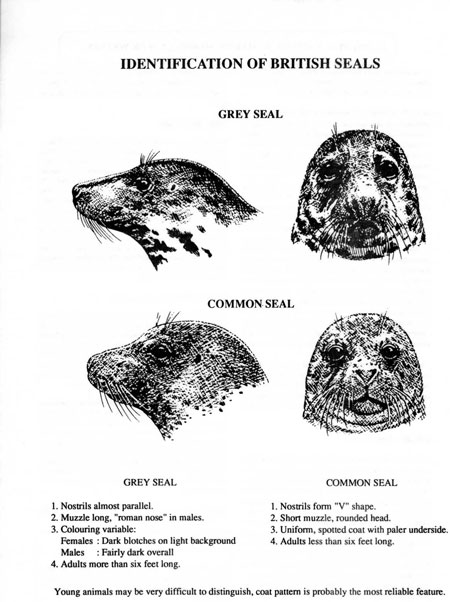Winter time
When the boat is laid up, wildlife watching can continue from hides all round the Forth. Out of season, over wintering waterfowl on nature reserves such as Aberlady face less disturbance from visitors so watching them becomes easier. The yachtsman used to working the tides is already attuned to this game, timing watching so that a rising tide drives birds towards the observer. He may also be used to getting up early and using his eyes in low light and will generally have the dawn flight to himself. The impecunious sailor with boat on a drying mooring is likely to have the best of the show as birds habituated to the presence of a boat come right up to it. With an overnight on the mooring one can conveniently view the arrivals, however early or late. Wildfowling books describe all this beautifully, harking back to the days of The Riddle when dogs and guns were a routine accompaniment to coastal cruising.
Animal helpline
SSPCA - Scottish Society for the prevention of Cruelty to Animals 0870 7377722
http://www.scottishspca.org/
Bibliography
The Forth Naturalist and Historian, published annually by the University of Stirling – contains the Forth Area Bird Report
Fife Bird Report, published annually by the Fife Bird Club
Scottish Executive “Identification of British Seals” advisory sheet
One Man’s Island, Paintings and sketches from the Isle of May, Keith Brockie
The Isle of May, WJ Eggling
The Story of the May Island, published by Largo Field Studies Society, Upper Largo, Fife
Isle of May National Nature Reserve, SNH
The Wildfowler in Scotland, John Millais
The Longshoreman – A life at the water’s edge, Richard Shelton
The Bedside Wildfowler, Colin Willock
Links
“Birding at Musselburgh”, I.J. Andrews http://www.andrewsi.freeserve.co.uk/birding-musselburgh.htm
“Birding the Isle of May”, Daren Hemsley http://www.the-soc.zenwebhosting.com/isle-of-may-sites.htm
Deepsea World, Fife www.deepseaworld.com
East Lothian Countryside Ranger Services www.eastlothian.gov.uk/content/0,1094,943,00.html
Fife Ranger Service www.scotland.gov.uk/Topics/SustainableDevelopment/7530
Forth Seabird Group http://www.forthseabirdgroup.org.uk/gc/Links/FSG%20Links.htm
Lothians and Fife Swan Group www.swanscot.org.uk
Marine Conservation Society http://www.mcsuk.org/
RSPB www. rspb .org.uk/ scotland
SSPCA Middlebank Wildlife Centre www.scottishspca.org/middlebankwildlifecentre.aspx
Scottish Natural Heritage www.snh.org.uk
Scottish Ornithologists Club www.the-soc.zenwebhosting.com/surveys.htm
Scottish Wildlife Trust www.swt.org.uk View for Montrose basin
Sea Mammal Research Unit, University of St Andrews www.smru.st-and.ac.uk/
Scottish Seabird Centre, North Berwick www.seabird.org
Tree mallow www.nerc.ac.uk/press/releases/2005/puffins.asp www.ceh.ac.uk/treemallow
Whale and Dolphin Conservation Society http://www.wdcs.org/
Paul Shave
yacht Blue Spindrift
15 March 2007


